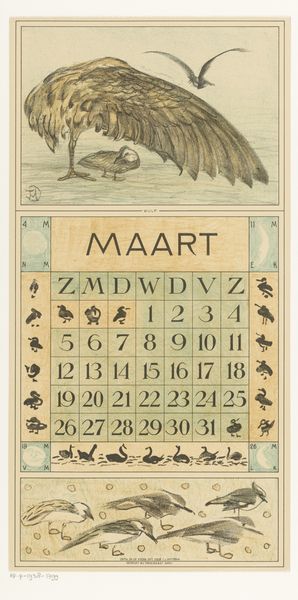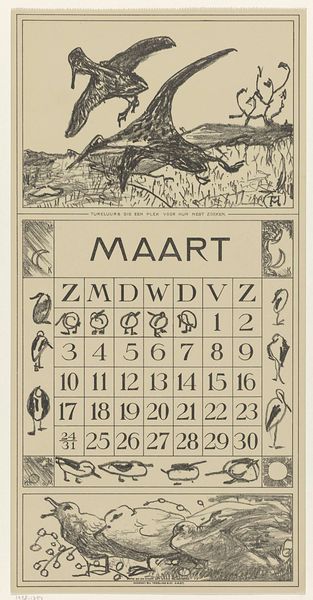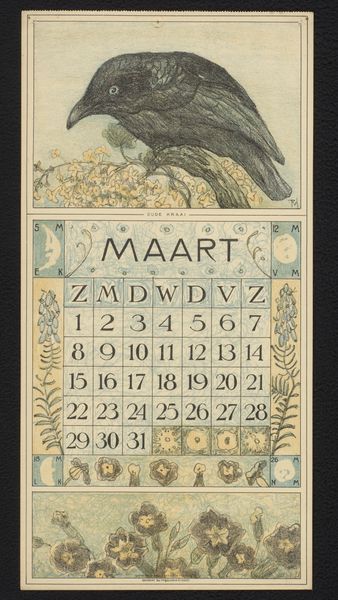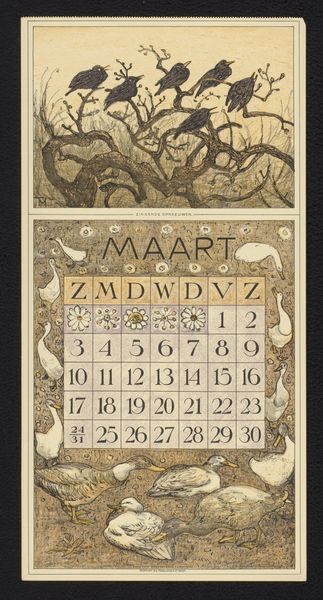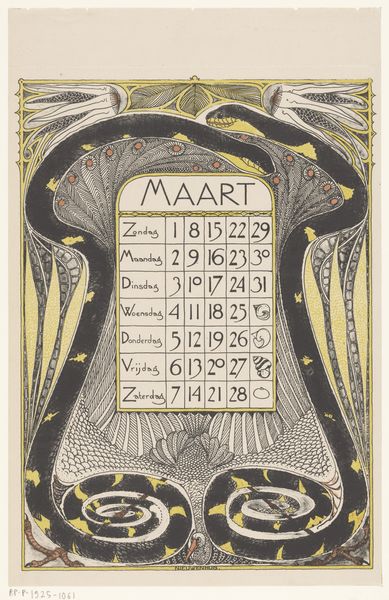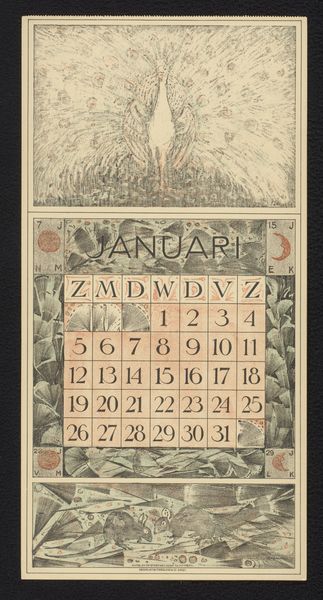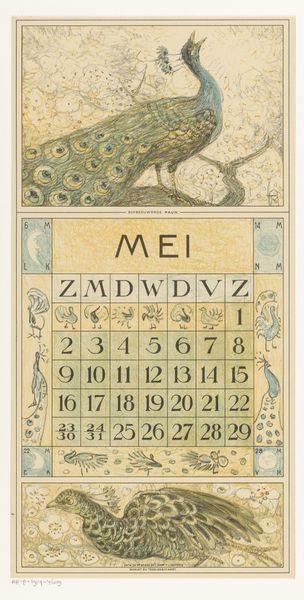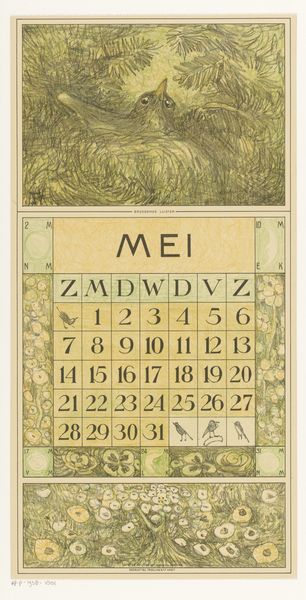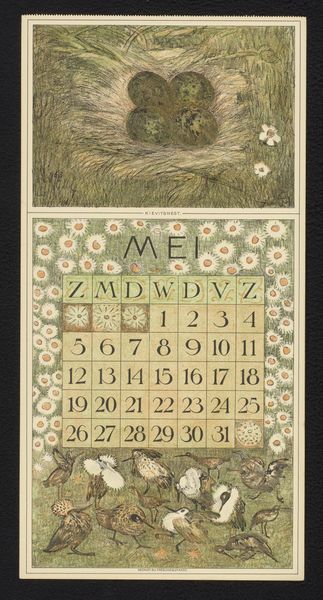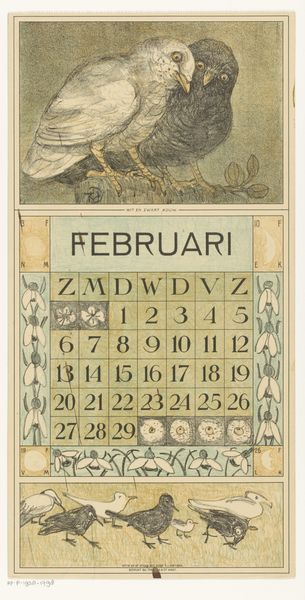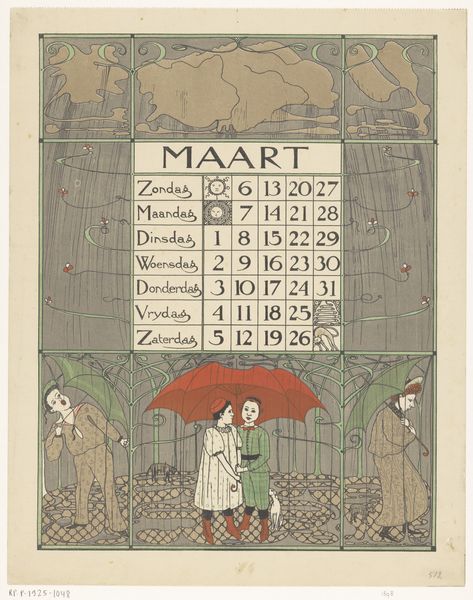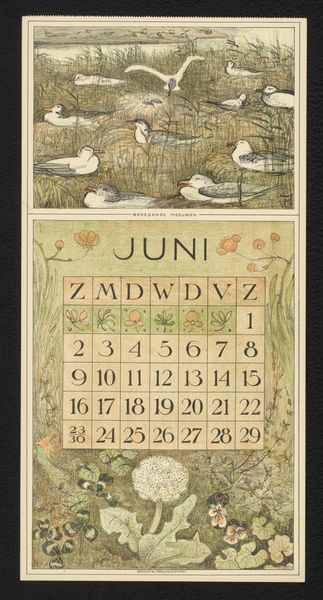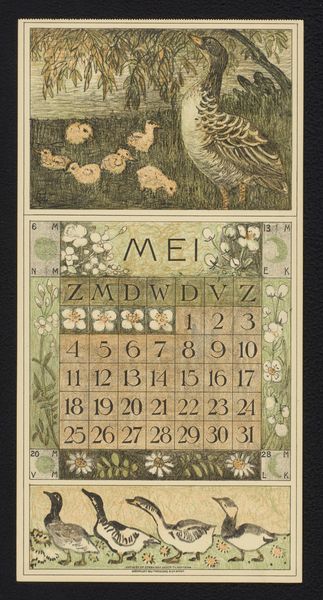
#
art-nouveau
#
animal
# print
#
landscape
#
watercolour illustration
Dimensions: height 420 mm, width 210 mm
Copyright: Rijks Museum: Open Domain
Curator: This calendar page by Theo van Hoytema, dating back to 1914, offers us a glimpse into the artistic sensibilities of the early 20th century through the lens of art nouveau. Editor: I am immediately drawn to the materiality. It has a quiet feel about it. A functional item that doubles as decoration for the home, blurring boundaries in a lovely way. It’s so fragile and vulnerable somehow. Curator: Absolutely. Hoytema's art intersects with burgeoning class and national identities. This print provides a rather gentle, yet visually compelling, perspective of nature through agriculture during a period of increasing social stratification. His integration of chickens could be read as a symbolic commentary of this social divide, considering how important chickens were for sustenance and also how they symbolized rural, common life. Editor: I see what you mean. And considering it’s a print, that opens interesting avenues for discussion around the democratisation of art through production—replicability of a work allowed this imagery of agricultural life to potentially circulate more widely. It is also about value, that some images are considered ‘art’ versus mere images, and where that lies, who draws the boundary. Curator: Precisely. Furthermore, think about the traditional representations of the calendar format. They mostly focused on pastoral imagery, mostly landscapes, idealizing farm work, especially in connection to time keeping and cycles of life. I’d say the animals included serve as a statement on ecological stewardship in its raw form. Editor: Ecology definitely resonates given our modern perspectives. But there's something so immediate in the print process, in the labor involved and also how it’s made accessible. We should never underestimate the value and labour behind that accessibility. How this democratisation process transforms our appreciation and perception of the original imagery or symbolism within is vital in understanding society then and now. Curator: These calendar artworks, when contextualized within Hoytema's artistic trajectory and within societal movements of his time, offer compelling dialogues about our interactions with our surroundings. Editor: In essence, understanding the materials of its making and purpose in life connects us to the values that continue to shape societies worldwide.
Comments
No comments
Be the first to comment and join the conversation on the ultimate creative platform.
